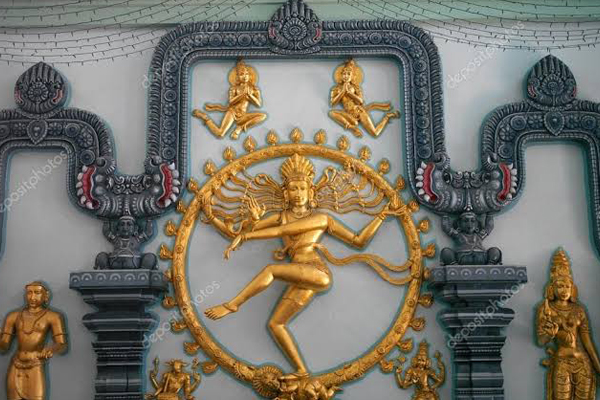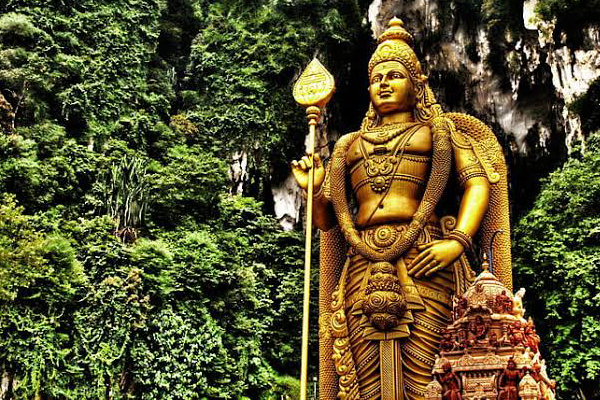
Vaitheeswarankoil Tamilnadu India
Vaideeswaran Kovil is famous for “Olaichuvadi Nadi Astrology” It is a town of Vaideeswaran Koil where the Siddhas came to greet in South India and Tamil Nadu in ancient times. Sages have written the future benefits of your life through palm prints.
We have been telling the astrological benefits of the details in that footprint through generations (Hereditary)
Family problems in people's life, future, events, life, education, career, marriage, information about a woman in love, love, remarriage, atism, house, previous birth, next birth, child benefits, husband and wife problems, enemies, diseases. Kandam, hidden problem, marriage compatibility to get rid of witchcraft, numbers given by yoga and its benefits will be told. The suitable date for marriage, marriage number and yoga number are all told through palm print.
We provide astrology results by recording via WhatsApp or email. We write in the note for those who do not have a horoscope.
To avoid these problems of Olaichuvadi travel cost, room rental cost and current epidemic (virus germ) in many countries, we are doing this Olaichuvadi Nadi Astrology service in Online (via WhatsApp call).
Pre-registration is recommended
Guruji : AANDAL JAYARAMAN
Mobile: +919384418137
Whatsapp: +919384418137
Landline No.: 04364279529
Malaysia mobile number: 0060 1115239664

Early history of Singapore
The early history of Singapore refers to its pre-colonial era before 1819, when the British East India Company led by Stamford Raffles established a trading settlement on the island and set in motion the history of modern Singapore. Prior to 1819, the island was known by several names; an early reference may be in the 2nd century work by Ptolemy which identified a coastal port at the southernmost tip of the Malayan peninsula, called Sabana. However, historians generally attribute a 3rd-century Chinese traveller's record describing an island at the same location called Pu Luo Chung, a transcription of Singapura's early Malay name Pulau Ujong, as the first recording of its existence. Singapore was known in the 13th to 14th century as Temasek. It changed its name to Singapura perhaps towards the end of 14th century. The island was alternately claimed by the Siamese and the Javanese in the 14th century. The last ruler of Singapura, Parameswara fled to Malacca after an attack by either the Javanese or Siamese, and established the state of Malacca. It was controlled by Sultanate of Malacca in the 15th century and the Sultanate of Johor from the 16th century.

Modern Malaysia
In 1970 three-quarters of Malaysians living below the poverty line were Malays, the majority of Malays were still rural workers, and Malays were still largely excluded from the modern economy. The government's response was the New Economic Policy of 1971, which was to be implemented through a series of four five-year plans from 1971 to 1990.[189] The plan had two objectives: the elimination of poverty, particularly rural poverty, and the elimination of the identification between race and prosperity. This latter policy was understood to mean a decisive shift in economic power from the Chinese to the Malays,[citation needed] who until then made up only 5% of the professional class. Petronas Twin Towers in Kuala Lumpur was the tallest building in Southeast Asia. To provide jobs for all these new Malay graduates, the government created several agencies for intervention in the economy. The most important of these were PERNAS (National Corporation Ltd.), PETRONAS (National Petroleum Ltd.), and HICOM (Heavy Industry Corporation of Malaysia), which not only directly employed many Malays but also invested in growing areas of the economy to create new technical and administrative jobs which were preferentially allocated to Malays. As a result, the share of Malay equity in the economy rose from 1.5% in 1969 to 20.3% in 1990.

Central Thailand
The Chao Phraya River in what is now central Thailand had once been the home of the Mon Dvaravati culture, which prevailed from the seventh century to the tenth century.[15] Samuel Beal discovered the polity among the Chinese writings on Southeast Asia as "Duoluobodi". During the early 20th century archaeological excavations led by George Coedès found Nakhon Pathom Province to be a centre of Dvaravati culture. The two most important sites were Nakorn Pathom and U Thong (in modern Suphan Buri Province). The inscriptions of Dvaravati were in Sanskrit and Mon using the script derived from the Pallava alphabet of the South Indian Pallava dynasty. The religion of Dvaravati is thought to be Theravada Buddhism through contacts with Sri Lanka, with the ruling class also participating in Hindu rites. Dvaravati art, including the Buddha sculptures and stupas, showed strong similarities to those of the Gupta Empire of India. The eastern parts of the Chao Phraya valley were subjected to a more Khmer and Hindu influence as the inscriptions are found in Khmer and Sanskrit. Dvaravati was a network of city-states paying tribute to more powerful ones according to the mandala political model. Dvaravati culture expanded into Isan as well as south as far as the Kra Isthmus. The culture lost power around the tenth century when they submitted to the more unified Lavo-Khmer polity. The Khmer temple of Wat Phra Prang Sam Yod, Lopburi.
